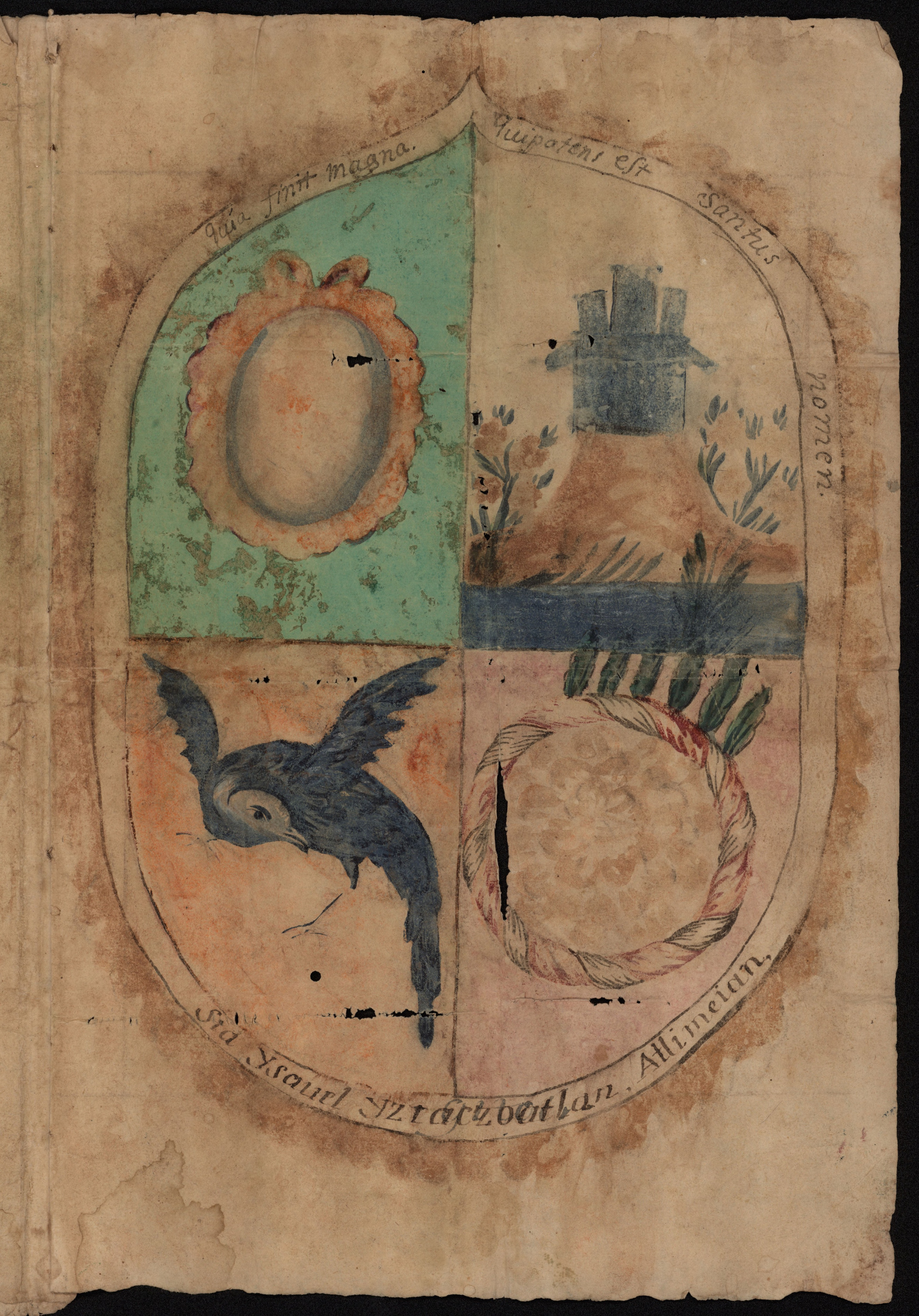Cartas Ejecutorias
A carta ejecutoria for Tlaxcalteca Hidalgos

Carta executoria for Don Pedro Acatótl, Don Miguel Cosca Teutli, Don Antonio Chitotl, and Don Juan Cholula Cahuátl, 1535.
After the conquest of Mexico-Tenochtitla, the indigenous allies of the Spanish conquistadores were rewarded with nobility titles and land by the King of Spain for services rendered. This Carta Ejecutoria is a rare survival of a sixteenth century document—along with a 1761 transcript of the text— that describes the brave actions in battle of four indigenous chiefs. These men, along with their armies, protected Hernán Cortés during the massacre of Cholula (November, 1519).
The carta ejecutoria was signed in 1535, in the city of Santa Izabel Yztaczoatlan, now known as Cholula. It was executed in notarial script on paper, as a functional legal document that may contrast with the decorative examples included in this collection, made in parchment and decorated in bright colors. However, the coat of arms included here represents an extremely valuable example of an image created by the indigenous people of Mesoamerica in adaptation of a European visual language.
The language of heraldry was quickly adopted by the people of Tlaxcala, since in their culture the tlamamalli—richly decorated wooden panels that warriors carried on their backs—worked in a similar way to European coats of arms.[8] They indicated lineage and represented the different “noble” houses. The image on this carta ejecutoria combines the European organization in quarters, with local motifs, such as the quetzal bird, emphasizing its colorful feathers, as well as a an indigenous shield, a chimalli, decorated with rich feathers too. These shields symbolized courage in battle and its figure, along with its colors would have been very meaningful for the Tlaxcalteca lords that received this insignia. Examples of tlamamalli and chimalli used in battle are illustrated in the Glasgow Manuscript (Hunterian Museum Library, Ms. 242 [U.3.15]).
The image of the coat of arms was designed by a local artist following the description included in the text:
“In one part a blue bird in flight on a red field, with green wingtips, feet and beak, and a curly head, and green feathers, and a red chest. And on another part, a raised hill, at the summit a fortress, flanked by yellow pillars and at the foot of the hill a stream of water, filled with many reeds. And in the blank space and in the other parts a chimalli adorned with green and yellow and white feathers by which we show our mercy as we praise your services of which you and your armorial will guard the memory. And by these arms your Indians and your descendants will be more honored.”
Even if the execution might look naive to a modern viewer, one must consider the difficulties of learning completely new conventions of visual representation that the artist faced. The strangely constructed architecture of the fortress reveals the efforts of the author to imagine a Castilian castle from the other side of the Atlantic Ocean. The colors of the painting have faded, but the fine traces that brought to life the feathered texture of the chimalli and the quetzal can still be appreciated, as well as the flowers and reeds that grow at the bottom of the hill.
This carta ejecutoria exists as a witness to the memory of brave warriors who sought survival in powerful alliances against their Mexica enemies. It is also an important reminder of the promises of honor made by the Spanish king and his envoys to different indigenous peoples, which would not be kept.
— Mariana Guzman